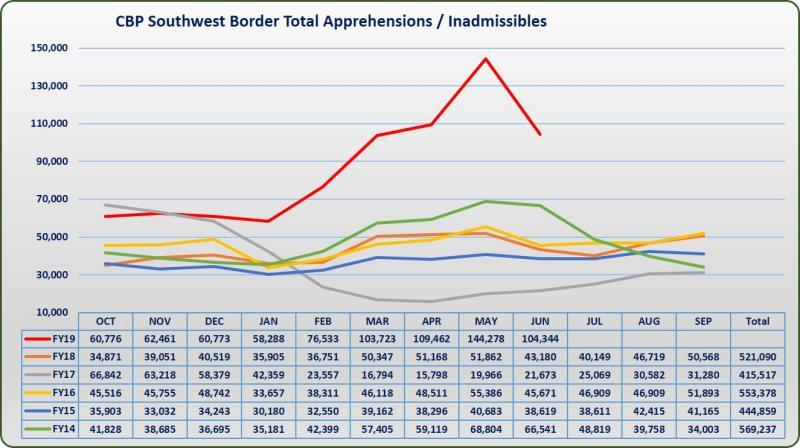Federal immigration officials, citing Mexico’s help and new Trump administration initiatives, are seeing far fewer illegal immigrants at the southern border than expected and now believe that those seized this month will be 25% fewer than in June, far more than the historic average drop.
What’s more, said Ken Cuccinelli, acting director of the Citizenship and Immigration Services, the number of migrants encountered at the border should continue to plummet as Mexico stretches its cooperation with the U.S. further across the southern border and changes to the asylum process kick in.
In an interview, Cuccinelli said that those caught at the border will likely be below 80,000 in July, a 25% drop from June when 104,344 were apprehended or turned away.
He said that the drop from June to July is typically 6%, which would result in 98,000 encountered at the border.

“We’re going to be way below that. If I had to guess we’d probably be below 80,000. A 25% drop is way beyond a seasonal drop,” Cuccinelli told Secrets during an interview in his office.
He cited new changes to asylum rules, a push for “expedited removal” and the “Migrant Protection Protocols” in which Mexico has agreed to hold migrants as they await U.S. immigration court hearings.
Cuccinelli explained that the MPP program has not spread across the border yet and that Mexico is now expanding into the high illegal immigrant traffic area in southern Texas.
“If Mexico continues to cooperate I think the numbers are going to keep going down because part of what’s happening is we are still not all the way across the border with MPP. That’s what’s coming on-line now in the southern part of Texas, for instance, including the Rio Grande Valley, which is the No. 1 corridor. The effect that we’ve had so far is without hitting the No. 1 corridor. And that’s just now starting up and we’re very enthusiastic about that and the potential that has to stem the tide,” said the acting director, a former Virginia attorney general.
As more migrants are sent home without winning a ticket into the United States, he said that it will likely discourage the flow more from Central American nations.
“It does it in two ways. One, when people don’t just get released into the interior, it changes their calculus and of the people back home. And also some of those people are going home,” he said, citing the expedited removal process.
“So that means people are showing back up in neighborhoods who left not too long ago and couldn’t get in,” he added.
Even with the drop in migrants trying to enter the United States, USCIS and other immigration agencies are working to close it down further and Cuccinelli is working on rules and make that happen, especially since border facilities are full and are expected to stay full for months.
“We really should just turn them back right off the bat. When we are full up, the legal argument can be made, a legitimate argument can be made, that the proper solution is immediate turn around,” he said.

